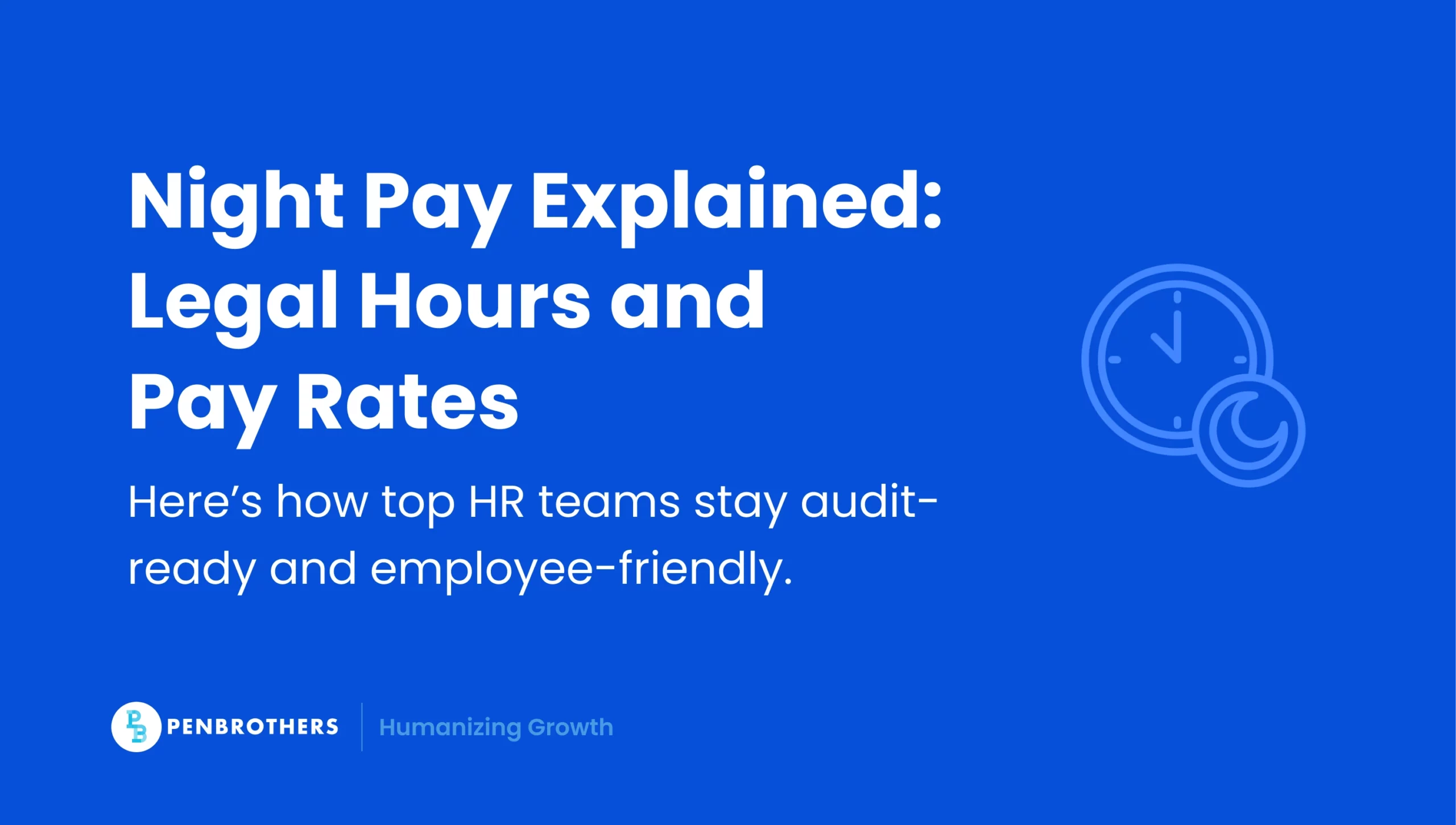What's Inside?
How to Compute Your Income Tax: A Step-by-Step 2025 Guide

If you are an employee in the Philippines and need to file your income tax return (ITR), you must ensure you’re doing it right. Tax filing can seem overwhelming, but with the correct steps, it doesn’t have to be. Let’s break down the income tax computation process and how you can file it correctly this 2025.
Understanding the Income Tax Filing Process
As an employee, you are required to file your personal income tax return (ITR) with the Bureau of Internal Revenue (BIR) if you are not qualified for substituted filing. The deadline for filing is April 15, following the close of the calendar year. For those who are not familiar with it, substituted filing means you don’t need to file a separate ITR because your employer’s BIR Form No. 2316 serves as your tax return.
Who Qualifies for Substituted Filing?
You are eligible for substituted filing if you meet all the following conditions:
- You had only one employer during the year.
- You have no other sources of taxable income except from your employment.
- Your spouse also meets the same qualifications.
If you don’t meet these criteria, you must file your own income tax return.
Important: Verify Your RDO Code
Before preparing your ITR, confirm the correct Revenue District Office (RDO) where you are registered. Incorrect filing due to an incorrect RDO can result in penalties. You can verify this by contacting or visiting the BIR office where you are registered.
Is 30K Salary Taxable in the Philippines?
It depends on more than just the 30,000 peso monthly amount.
The basic answer: yes, 30,000 pesos monthly is above the tax exemption threshold. But the real answer involves your total annual income, deductions, and personal exemptions.
Here’s how it works. The first 250,000 pesos of annual income is tax-free. Monthly, that’s roughly 20,833 pesos. Earn 30,000 monthly and you’re making 360,000 annually. That puts 110,000 pesos into taxable territory.
But taxable doesn’t mean you pay tax on the full amount. You pay tax on the excess over 250,000. So your taxable income would be 110,000 pesos, not 360,000.
The tax rate on that 110,000? Twenty percent. That’s 22,000 pesos annually, or about 1,833 pesos monthly in taxes.
However, deductions change everything. The standard deduction is 40% of gross income or 100,000 pesos, whichever is higher. For someone earning 360,000 annually, the 40% deduction (144,000 pesos) exceeds the 100,000 minimum.
With deductions: 360,000 gross income minus 144,000 deduction equals 216,000 taxable income. That’s below the 250,000 exemption threshold. Result? Zero tax liability.
But this assumes you’re claiming the standard deduction and have no other income sources. Side hustles, freelance work, or investment income could push you over the threshold.
Other factors matter too:
Withholding taxes: Your employer deducts taxes monthly based on projected annual income. Even if your final computation shows zero liability, taxes might have been withheld throughout the year.
Filing requirements: Even if you owe no tax, you might still need to file a return if you don’t qualify for substituted filing.
13th month pay: The first 90,000 pesos of bonuses and 13th month pay is tax-exempt. This reduces your taxable income further.
The bottom line for 30,000 monthly earners: you’ll likely have minimal tax liability, but some taxes might be withheld during the year that you can recover through proper filing.
What Is the Formula for Calculating the Taxable Income?
The Philippine tax system uses a progressive bracket system. Higher income means higher rates, but only on the excess amounts.
Here’s the 2025 tax table for individual taxpayers:
Annual Income Brackets:
- 0 to 250,000: 0%
- 250,001 to 400,000: 20% of excess over 250,000
- 400,001 to 800,000: 30,000 + 25% of excess over 400,000
- 800,001 to 2,000,000: 130,000 + 30% of excess over 800,000
- 2,000,001 to 8,000,000: 490,000 + 32% of excess over 2,000,000
- Over 8,000,000: 2,410,000 + 35% of excess over 8,000,000
The calculation formula:
- Gross Income = Total compensation + other taxable income
- Less: Deductions = Standard deduction (40% of gross or 100,000, whichever is higher) OR itemized deductions
- Taxable Income = Gross income minus deductions
- Less: Personal Exemption = 50,000 for single, 100,000 for married
- Net Taxable Income = Taxable income minus personal exemptions
- Apply tax brackets to net taxable income using the table above
Example calculation for 600,000 annual income:
- Gross Income: 600,000
- Less Standard Deduction (40%): 240,000
- Taxable Income: 360,000
- Less Personal Exemption (single): 50,000
- Net Taxable Income: 310,000
Tax computation: 20% of (310,000 – 250,000) = 20% of 60,000 = 12,000 pesos annual tax
Monthly withholding uses the same brackets but applies them to projected annual income, then divides by 12 months.
The formula seems complex, but payroll systems and the eBIRForms handle the calculations automatically once you input your income and deduction details.
How to Compute Your Income Tax
To compute your income tax, follow these straightforward steps:
Step 1: Gather Required Forms and Information
First, download the latest version of the eBIRForms from the BIR website. You will use this for your ITR filing.
BIR Form No. 1700: This form is for individuals earning purely compensation income, and it will help you compute your tax due based on your salary.
Step 2: Complete Your Personal Information
When filling out the form, make sure to include your personal details, such as your name, address, and Taxpayer Identification Number (TIN). Additionally, ensure you use a valid email address because the BIR will send your Tax Return Receipt Confirmation (TRRC) email to this address as proof of filing.
Step 3: Report Your Income
Next, consolidate your income from your employers, including taxable and non-taxable items. Don’t forget to input the taxes withheld from your BIR Form No. 2316 from your previous and current employers. You can also combine both your and your spouse’s income on one return if applicable.
Related: Know if you’re getting fair compensation in the Penbrothers Salary Guide 2025.
Step 4: Claim Exemptions
Employees are eligible for an exemption of up to P90,000 on their 13th-month pay and other benefits, such as bonuses. The exemption will be the lower of P90,000 or the total amount of bonuses and benefits you received during the year.
Step 5: Calculate Your Tax Due
The BIR Form No. 1700 automatically computes your tax due based on the information you provided. Most employees will find that their tax due exceeds the taxes already withheld, which means you’ll have to pay additional tax. If your taxes withheld are greater than your tax due, you have overpaid, and you may be eligible for a refund.
Step 6: Validate and Submit Your Tax Return
Once you’ve filled out the form, click “Validate” to check for any missing information. After validating, click “Submit/Final Copy.” A successful submission notice will appear, and you should also receive the TRRC email from the BIR as proof.
Step 7: Pay Your Taxes
If you owe additional taxes, you can pay them either online or manually:
- Online Payment: Use the ePayment channels available on the BIR website for a quicker and more convenient payment process.
Manual Payment: Print your BIR Form No. 1700 and Form No. 2316, then submit and pay at an authorized agent bank (AAB) or the Revenue Collection Officer (RCO) at your RDO.
Step 8: Submit Your Documents
If paying manually, print at least three copies of your BIR Forms and the TRRC email (or screenshot of the successful submission notice). Sign the forms, then submit them along with your payment.
Simplify Your Tax Filing: Ensure Accuracy and Compliance Today
Filing your income tax return (ITR) in the Philippines can be simple once you understand the process. Employers help by withholding taxes, but it’s your responsibility to ensure the correct filing and payment of any additional tax due. Remember to verify your RDO, use the eBIRForms, and ensure you claim the appropriate exemptions. By following these steps, you’ll be well on your way to filing your tax return correctly this 2025.
For further details, always check the BIR guidelines or consult with a tax professional if needed. Happy filing!
*This article was crafted with the support of AI technology and refined by a human editor.





